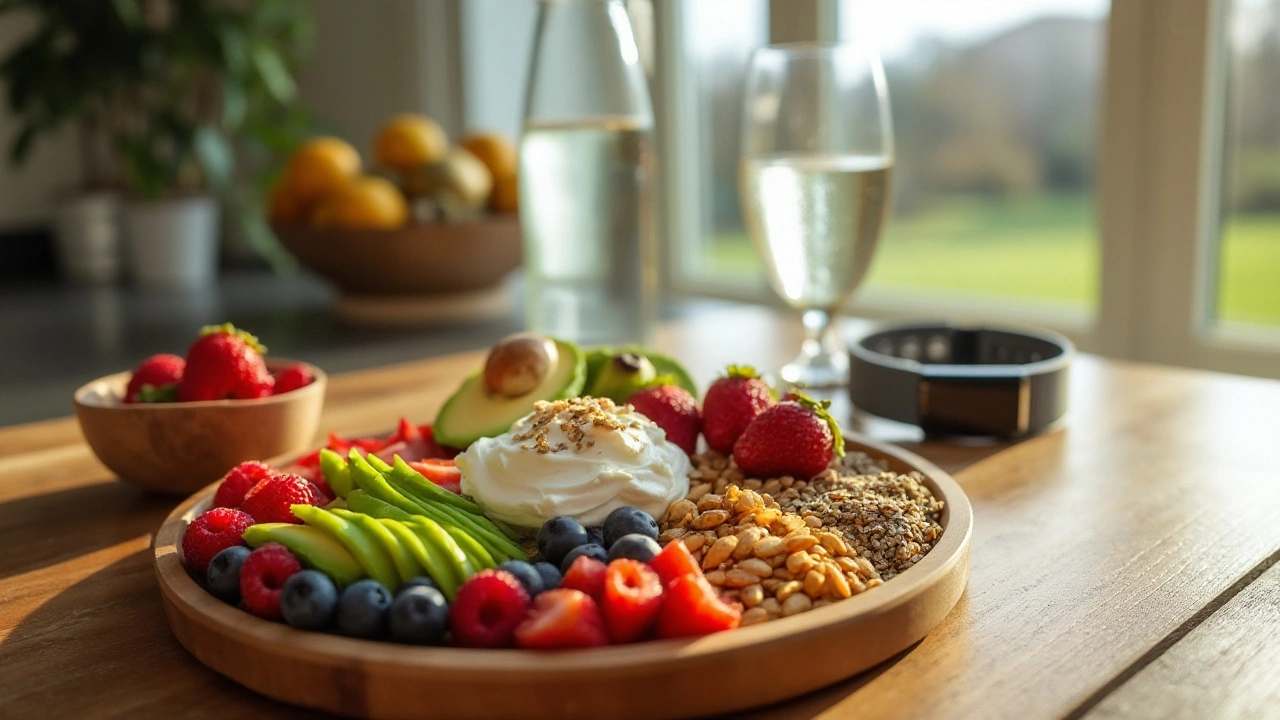Want a diet that fits real life? You don't need strict rules or expensive food. Small changes—simple swaps and real routines—make the biggest difference for energy, weight, and mood.
Start with breakfast. Aim for protein + fiber within the first hour to keep hunger steady. Try Greek yogurt with berries and a handful of oats, a quick egg-and-veg wrap, or a smoothie with spinach, frozen fruit, and a scoop of protein. If mornings are busy, prep jars of overnight oats or hard-boiled eggs the night before.
Snacking matters. Pick snacks that combine protein and fiber to avoid blood sugar crashes: apple slices with nut butter, hummus with carrot sticks, cottage cheese and pineapple, or a small trail mix of nuts and seeds. Swap chips or candy for roasted chickpeas or air-popped popcorn topped with a little olive oil and sea salt.
Mindful eating helps you stop automatic overeating. Pause before you eat and ask: 'Am I actually hungry or stressed?' Eat without screens, take three deep breaths, and chew slowly. Notice flavor and texture—when a meal satisfies, stop. Mindful habits help with portion control and make food feel more rewarding.
Stress and sleep change your appetite. If you’re tense, reach for convenience foods. Try short breathing exercises, a five-minute walk, or a cup of green tea to calm cravings. Improving sleep by even 30 minutes can lower late-night snacking and make daily choices easier.
Your gut affects weight and energy. Include fiber-rich foods like beans, whole grains, and vegetables to feed good bacteria. Fermented foods—yogurt, kefir, sauerkraut—can help digestion. If you suspect a gut issue, track symptoms and try small changes for two weeks before switching tactics.
Small swaps add up. Choose whole grains instead of refined, swap sugary drinks for water or unsweetened green tea, and pick lean proteins like fish, chicken, or legumes. Cooking more at home saves calories and money—roast a pan of mixed vegetables and use leftovers for wraps or bowls.
If weight loss is a goal, focus on steady habits instead of shortcuts. Build a weekly plan: three meals with planned snacks, one new recipe, and one takeaway-free day. Measure progress with energy levels, sleep, mood, and how clothes fit—not just the scale.
Quick wins you can try today: add a veggie to breakfast, replace one sugary drink with water, prep two snack options for the week, and practice one five-minute breathing break before meals. These moves reduce stress, feed your gut, and make healthy eating stick.
Want more specific ideas? Check posts on healthy snacks, quick breakfasts, gut health, and mindful eating for recipes and step-by-step plans that fit military life and busy schedules.
Sample grocery list: oats, eggs, canned beans, brown rice, frozen vegetables, Greek yogurt, nuts, fruit, spinach, and tea. For a quick dinner, make sheet-pan salmon, sweet potato wedges, and a green salad. Keep serving sizes sensible: palm-size protein, fist-sized veg, thumb of fats.

Finding the right snacks can significantly enhance your fitness journey. This article explores various healthy snack options that are not only delicious but also packed with nutrients to fuel your workouts and recovery. Learn about their benefits and how to incorporate them into your daily routine.
Read More